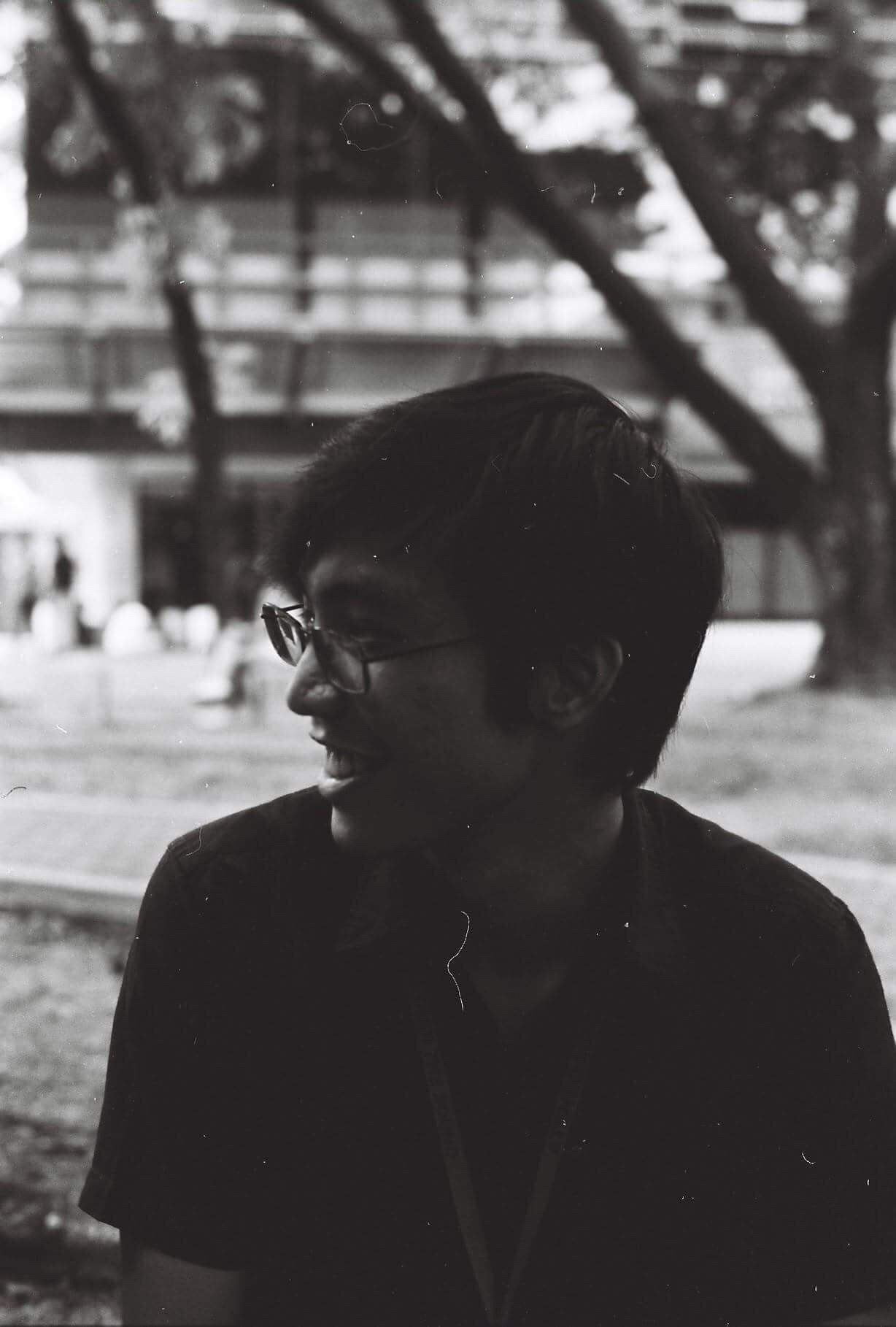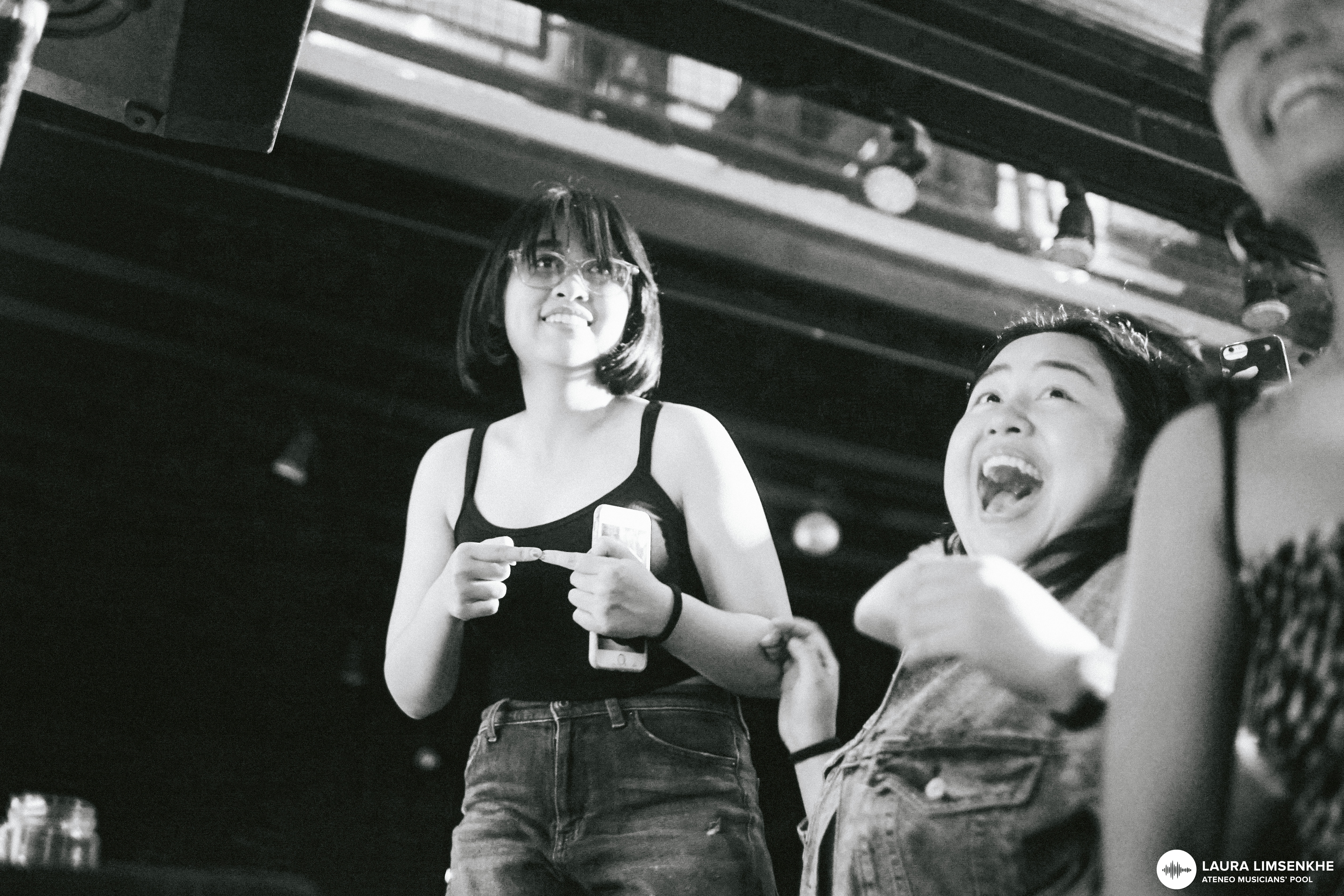With the past decade seeing the most advanced technology yet, music has evolved in ways the world has never seen before. This section takes a look at two regulars from the Philippine music scene–each influenced by different eras and generations–who, ultimately, share the same love for the craft.
Millennial: Mike Tee
Mike Tee is the bassist for The Mad Lilacs and a former member of Ashley’s Kryptonite.
Age?
23 years old.
Favorite genres?
I enjoy jazz, hip-hop, and soft rock, among other things.
Favorite artists?
Some of my favorite artists would include D’Angelo, Michael Franks, and Laura Nyro, to name some off the top [of] my head.

Though now a music authority in his own right, Mike got his start by listening to his friends’ music recommendations. In high school, he learned to love artists such as The Beatles, Nirvana, and Pixies. Tee also started to play the bass guitar at around the same time, taking inspiration from other musicians.
With these beginnings influenced by his peers, Mike sees music as the product of an era–more specifically, of “a period’s cultural, economic, and political landscape.” To him, music evolves through experimentation against the status quo. He cites Japanese city pop as an example of how music was formed and further evolved as a result of contemporary events, specifically World War II.
Tee furthers his point by mentioning A Tribe Called Quest, an American hip-hop group active from the mid-1980s to the early 1990s, who pioneered a new type of hip-hop through their unique rapping and production styles. By experimenting with jazz music and a wide vocabulary, the group was able to make new and intelligent cultural references in their tracks, while keeping some familiar elements. “[They] were still informed by the use of hooks, breakdowns, and strong, bumping drum loops that previous hip-hop groups have utilized,” Mike explains.
Alongside contemporary issues and events, the internet has also helped define the evolution of the past decade’s trends. Tee mentions vaporwave, a genre that became wildly popular in the early 2010s. “[Vaporwave] utilized the aesthetics of chopped and looped smooth jazz, and turned it into an elaborate meme that is strikingly nostalgic,” Tee explains. He also points out how the meme culture associated with vaporwave shaped the distinct retro image of the genre.
To Tee, growing up with the internet has taught him to be more receptive of music on the online sphere. “I think my generation is strongly informed by the algorithms of the Internet, where we are suggested music in our sidebars,” he notes. Tee aso looks forward to fresh and exciting music in the coming years: Music that truly “challenges what we hear in the pop sphere.”
Generation Z: Andy Pavia
Andy Pavia is the current President of the Ateneo Musicians’ Pool.
Age?
21 years old.
Favorite genres?
I gravitate towards rock and its sub-genres; I like classic rock, pop-rock, alternative rock, [and] punk.
Favorite artists?
I have a difficult time choosing a favorite musician because I feel like I’m “cheating” on other musicians that I like.

First introduced to music by her father, Andy Pavia grew up listening to genres such as 60s and 70s classic rock, 80s new wave, and 90s alternative rock. Music was the way her father communicated with her, and now, Pavia sees how it is used to communicate a spectrum of ideas across cultural barriers. “As the world goes through changes, music makes history as permanent as books do,” she notes. By tackling current events such as the drug war and gun violence, music reflects the state of the world–reinforcing Pavia’s point about music as an instrument of history.
Much like Tee, Pavia believes that the internet and technology each play a hand in the evolution of music. She emphasizes how better access to online classes, software, communities, and inspiration have allowed the music scene to be more inclusive of independent artists and bedroom musicians. To Pavia, this has made it easier for them to “gain recognition, promote their music, and most importantly, make music.”
Streaming is one example of how listeners today have nearly unprecedented access to music, thanks to services like Spotify, Apple Music, Soundcloud, and Bandcamp. But Pavia also points out that this is not the only avenue for discovering new songs and genres. “Music is now being discovered through YouTube (à la Justin Bieber), film and television show soundtracks...Spotify playlists, and even memes,” she observes. Pavia lists the Harlem Shake, the Mannequin Challenge, Vine and TikTok memes, and Sarah Geronimo’s “Tala” (2015) as some of the most popular examples of memes that have influenced public consumption of music.
This culture of “instant exposure” has affected the traditional production process. It has given artists more sources of inspiration. But as a result, Pavia says that the music scene has also become more competitive. “While it’s now easier to enter the market, the fight for success is getting more and more challenging every day,” she adds.
Despite increasing competition in the music scene, Pavia has two big hopes for the industry: More diversity and even more experimentation. “Our access to streaming allows us to discover music from anywhere in the world,” she says. And with that, it’s only right that we keep an ear out for what’s new.
Technology has indeed allowed listeners of all ages to effortlessly find their next favorite song, making access to a wide selection of music as easy as the click of a button. With audiences–each unique in how they are influenced by generations before them–constantly clamoring for new material to consume, the pressure is on musicians to keep up with the demand. But with artists of every age and every genre cropping up at each turn, one can only hope for more representation and experimentation in the music industry.
Photos courtesy of our interviewees
Graphic by Tan Yu Ling Fabro